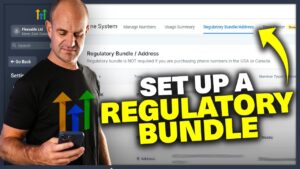What Type of Industries Do You Work In as a Business?
I own a business called FlexxDigital. We’re a lead generation agency, and we specialise in the financial service industries.
So, the most important thing for us, when we’re looking to enter a new niche or a new vertical, is to make sure there’s a mass appeal. Going after a local dentist or plastic surgeon isn’t the right model for us, as their potential client list is limited to those in the immediate area.
We need to help clients with a national-type following. For us, it’s universal financial issues like mortgages, secured loans, debt consolidation, broadband. We need to make sure the services we specialise in affect millions of people, not just 10 or 20 within a local city.
Are Lead Ads Any Good?
No, generally not. From experience, this is even worse than sending traffic to a landing page.
When lead ads were first announced, they were a big thing, and I was excited when Facebook said that the lead form would be pre-populated when people click on the ad. So, we tried this, and the contact rates for those leads were appalling.
For example, if we were selling broadband connection, the ad might say something like, “Get cheaper broadband, we’re 10% cheaper than BT or Sky”. People would click on that ad, the form would pop up filled in for them, and all they’d need to do is press “send”. This doesn’t make them qualified buyers.
Lead ads just aren’t good for our service industry. For the type of prospects we need, reducing the advert interaction to a couple of clicks on their part doesn’t work.
What Type of Ads Do We Run?
You might have heard the term “curiosity-driven headlines”. I actually hate this phrase, because it puts a bad light on the type of ads we create. It’s like we’re trying to trick prospects into becoming customers. But, at the end of the day, this type of ad works for us.
We tap into the “curiosity” angle in our ads. Usually, we use short, attention-grabbing copy, and a variation of a tried-and-tested headline. You can download something called “swipe files” to help you develop these, and we’ll link you to some at the bottom of the post.
We use variations of tried-and-tested headlines that have had measurable results for the last 50 or 60 years. These could be something like, “How To Do X, Y or Z in 90 Days”, or “The Truth About…” etc. These are the headlines that create intrigue. The better the headline, the more Facebook will reward you by reducing your cost per click.
The trick is to keep the curiosity element going while educating your audience at the same time. Where people fail is that they’ll try to write an intrigue-type ad, then they’ll send the prospect straight to a landing page. That doesn’t work. You need a step in the middle, and we call that an “advertorial”.
To give you an idea of how well this works:
If we were running an ad to a landing page, we might get 100 clicks and perhaps 5 conversions. You would think that converts better than an advert to an advertorial to a landing page, but that’s not the case.
With the funnel (aka, the advertorial) in place, we will get 100 clicks and 10 conversions because we’ve educated our audience enough to know our offer and how the service will help them.
I can’t recommend this method enough. Try writing some good curiosity-driven headlines, and sending your prospects to an advertorial or blog post with a strong call to action. Once your audience has been “warmed up” to the offer, the landing page will convert the prospects into leads.
How Else Do We Improve Lead Quality?
In some of the industries we work in, we generate hundreds of leads per day. Over time, if you liaise closely with your client, you’ll find there are some stories with these hundreds of leads coming in.
Say you manage to get 100 leads. There may be one characteristic within some of those leads which actually help them convert a lot better than the rest. For example, those currently in employment are more likely to become leads than those who are unemployed.
Once you’ve made notes of the data, you can charge a client more for the leads you know will convert better than the ones who don’t follow the trends you’ve found. This actually benefits the client because it means they won’t be running through hundreds of potentially useless leads.
My advice is to look at your ad data as it comes in, segment it down and discover the trends, then sell the leads at a different price depending on their characteristics.
What Is Happening With The New Blog?
We’re creating a weekly video/blog post discussing the issues, trends and successes we see every day in the agency.
We’re also hosting a live masterclass on how we developed a lead generation agency which turned over almost four million dollars last year. This happens every Thursday for the next 10 weeks, so make sure you tune in!
Free Training
Flexx Digital is a PPC agency that uses the Pay Per Lead model – no retainer contracts.
If you want to find out more about this Pay Per Lead model, and how we run the business, check out my free case study.
Inside you’ll find how I:
- Severed ties with retainer contracts once and for all
- Moved away from local businesses
- Started working with national B2C companies
- Land high-ticket clients
- Found the verticals we work in
- Consistently generate leads of the highest quality
Resources:








